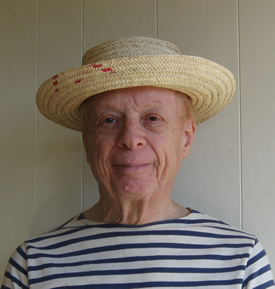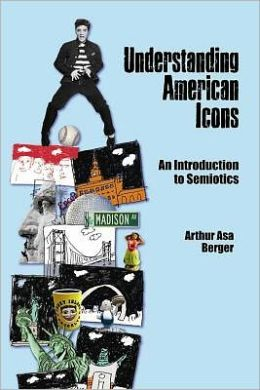Introducing Arthur Asa Berger
 Arthur Asa Berger is Professor Emeritus of Broadcast and Electronic Communication at San Francisco State University, where he taught from 1965 to 2003. He has published more than 100 articles and close to 70 books on media, popular culture, humor and tourism. His books have been translated into eight languages and fourteen of his books have been translated into Chinese. His book “Bloom’s Morning” was translated into German a number of years ago. Among his books are a number of darkly comic academic murder mysteries such as “The Hamlet Case”, “Durkheim is Dead”, and “Mistake in Identity”.
Arthur Asa Berger is Professor Emeritus of Broadcast and Electronic Communication at San Francisco State University, where he taught from 1965 to 2003. He has published more than 100 articles and close to 70 books on media, popular culture, humor and tourism. His books have been translated into eight languages and fourteen of his books have been translated into Chinese. His book “Bloom’s Morning” was translated into German a number of years ago. Among his books are a number of darkly comic academic murder mysteries such as “The Hamlet Case”, “Durkheim is Dead”, and “Mistake in Identity”.
For more information, please have a look at this article by Professor Berger.
My New Book In 750 Words
1. What are the main themes of the book?
Understanding American Icons uses semiotics and other theories from cultural studies to analyse and help explain the social, cultural, economic and political significance of two dozen important iconic buildings or places in the United States. The book is informed by such theories as Bakhtin on carnivalization, Freud on the unconscious and other aspects of the psyche, Lyotard on postmodernism, Saussure and Peirce on semiotic theory, Eliade on sacred and profane space, de Bord on spectacle, and so on. I would change the subtitle to read “An Introduction to Applied Semiotics.”
2. What are the central questions of the book?
The central question I deal with is how can one use semiotics and theories from what we might describe as allied disciplines found in cultural studies to understand the significance, for American society and culture, of the iconic buildings and places I deal with. Allied to this we might ask, “what do these iconic buildings and places reveal about American culture and society?” If we take the Freudian perspective of the unconscious as a model, my focus is not on the conscious significance of a building or site but its unconscious or hidden meanings.
 3. How have you sought to answer these questions?
3. How have you sought to answer these questions?
I’ve tried to answer the question by applying various theories that helped unlock their meaning. I sometime describe myself, mocking myself, as someone who applies obscure theories with dubious results… I leave it for the reader to decide about the value of my analyses. The book starts with a brief chapter on semiotics and tourism and then I apply theories that seem to me to be relevant to help unlock the meaning of the two dozen sites I deal with. In a sense this is book on textual analysis, except that the texts I have analysed are places and buildings generally regarded as iconic in America. I’ve tried to use these icons to help my readers gain insights into American culture. I might be accused of “reading things in” when I make my analyses but I’m willing to take my chances on that front.
4. What are the main findings of your book?
I would suggest that there’re much more than meets the eye to the iconic buildings and places I analyse. They can’t be understood on the “face value,” but have to be tied to phenomena such as the Frontier theory, the growth of postmodernism, Disney’s anal eroticism and desire to control others, the exploitation of indigenous or native people by those with power, deficiencies in the “melting pot” theory of American society, and other such matters to understand their significance.
5. What does the book contribute to existing literature in the field?
It deals with American culture in terms of its iconic buildings and places using a cultural studies approach that suggests the importance of applied semiotics in analysing cultural phenomena. I see the book as an example of applied semiotic analysis in a book that provides new perspectives on important and often taken for granted parts of American culture. Even though I have written extensively on media and popular culture, I still have an American Studies (which I see as a form of cultural studies that happens to be focused on America) DNA and much or my work relates to my educational “formation.”
 6. How does the book relate to your own (personal/professional) background?
6. How does the book relate to your own (personal/professional) background?
First of all, I drew illustrations for all of the iconic places. I am a writer but also an artist/illustrator, so the book is distinctive in that respect. I started my career with a PhD in American Studies with a dissertation on an important comic strip, “Li’l Abner”. From that I moved on into popular culture and then to media. I’ve written books such as “Media Analysis Techniques”, “Ads Fads and Consumer Culture”, “Signs in Contemporary Culture: An Introduction to Semiotics” and “Media and Communication Research Techniques” that do two things: they discuss theories and they show how these theories can be applied. In the course of my lecturing in various universities over the years, I’ve found that many professors are so intoxicated by theory that they spend a whole semester or year on theory and find that their students don’t have the slightest idea of how to apply any concepts from the theories that they’ve learned. That is, they know the theories but don’t know what to do with them.
7. What further research into the book’s themes would you suggest?
Digging deeper, find more theories to apply, and perhaps looking at other icons.
